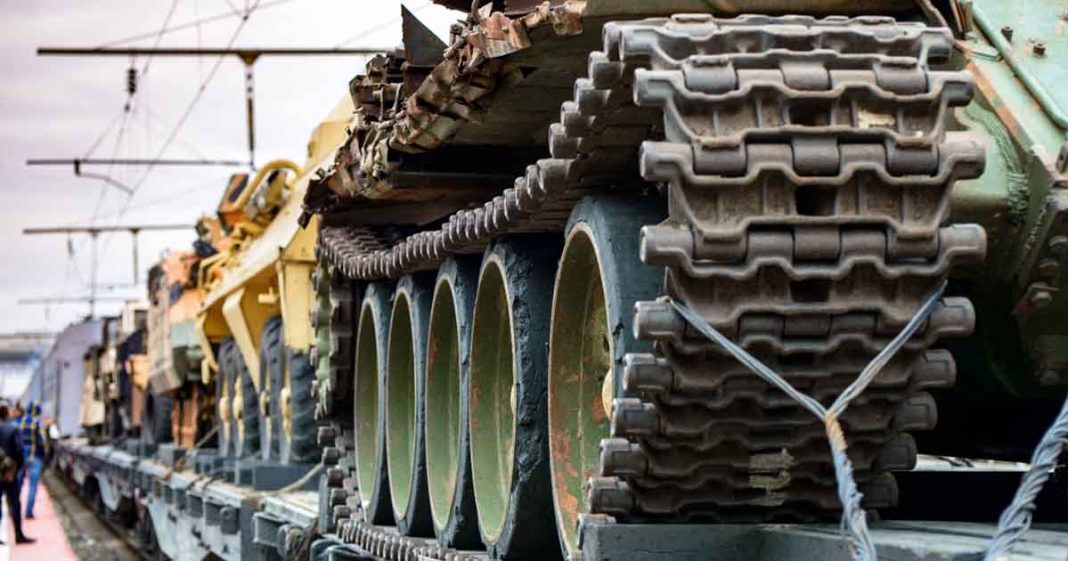The military preparedness of a country is essential for the maintenance of peace and stability of the country. It requires military preparedness, vigilance, and rigorous training. It eventually prepares the enemy for the crucial circumstances of whatsoever kind of conflict or scenario falls upon. The military induction of the latest weaponry and advancement in technology signifies the maintenance of stability in the region, thus promoting peace. Therefore Pakistan consolidating conventional deterrence is important to fight the enemy’s aggression.
Deterrence has always remained a fundamental notion in the maintenance of peace throughout history. Thus, military up-gradation becomes a symbol of peace, by creating conventional deterrence in the already volatile South Asian region.
Read more: India considers Pakistan’s cyber capabilities more dangerous than China: Report
Pakistan’s efforts at modernization of its weapons
Pakistan has recently inducted the VT-4 tank, in the pursuit to modernize the military in a fast-changing era of military modernization and warfare. The VT-4 Tank is compatible with the world’s modern tanks; it integrates advanced amour protection, fire-power capabilities, maneuverability, and the latest technology. The up-gradation of military technology is essential to give an edge over the aggressive enemy.
For more than two decades Pakistan and India have stepped into the nuclear domain, but the importance of conventional deterrence for the maintenance of strategic stability can’t be overruled, especially when the enemy tries to exploit the space below the nuclear belt. India has always tried to get in the way of strategic stability by embarking upon limited war strategies. A number of military doctrines have been introduced by India in the last few years. The Cold Start Doctrine was introduced in 2004, a blitzkrieg kind of strategy by India, to intrude into Pakistan’s geographical territory, and capture it as a bargaining chip; the 2017 Joint Armed Force doctrine, followed by Land Warfare Doctrine-2018 (LWD-18), were all orthodox offensive strategies to punish Pakistan through various means of territorial, cyber and space.
The currently in view military policy of Theatre Command Structure by India is another step towards military aggressive Indian posture, by creating theatres, inculcating the tri-services and inflicting maximum damage to the enemy, is the new aggressive Indian strategy in the pipeline. In the view of these aggressive military strategies, the limited war under the nuclear threshold could potentially become a conflict accelerator, disturbing the strategic stability in the region with disastrous consequences.
Read more: Aman 2021 naval exercise manifest Pakistan’s quest for peace
Why deterrence is important?
The rationale of deterrence is basically to delay the achievement of the targeted aim of the adversary, by delaying and protracting the war. The deterrence holds its significance when the adversary believes that the quick attainment of the objective is not easy and doable, hence deterring the enemy from any misadventure. Thus, concrete steps are required at the conventional level, by modernizing the arms and upgrading the existing military arms, in order to cope with the upcoming challenges and maintenance of deterrence stability in the region.
Pakistan has been compelled to adopt the defensive dual-track strategy-military preparedness at both conventional and unconventional levels- to cater to India’s aggressive schemes at both levels. The Full Spectrum Deterrence Posture of Pakistan has been credible enough to deter the adversary at an unconventional level, as it has successfully withheld India from going into a full-scale war, since nuclearization. India’s aggressive designs and military strategies and war doctrines, with mounting low-level conflicts chances have pushed Pakistan to remain vigilant at the conventional level, to accommodate for the instability at the lower level.
Pakistan has to be prepared with upgraded weapons and technology, inculcating cyber and space, rigorous training, and preparedness of the military is required for making the war exorbitant and unthinkable for India. The strengthening of both conventional and unconventional deterrence in South Asia is the only way out for the maintenance of peace, Indian has indulged Pakistan in an arms race, by its offensive aggressive military postures, and has created a burden on the weak economies of South Asian states, by exerting so much money and energies on warfare arrangements, preparations, and inculcation.
Pakistan has maintained the credibility of its forces, and has time and again nullified the practicality of India’s aggressive doctrines, which is evident by the quick and prudent response in the Pulwama-Balakot Crisis of 2019 when Pakistan’s vigilant and swift response played the deterrent role and hindered the enemy from further escalating the conflict. This incident also proved the credibility of Pakistan’s nuclear deterrent, which remained intact.
Read more: Op-ed: Pakistan’s economic malaise, is there any will to tackle it?
Hence, to summarize, the nuclear aggressive designs of India create a security dilemma for Pakistan, provoking it to go for the conventional and unconventional military preparedness. This continuous modernization has become essential for preventing the enemy to go for any misadventure for the maintenance of strategic stability in the volatile South Asian region. The strong conventional deterrence creates anxiety and fear in the heart of the adversary, that waging a war in such a scenario could potentially cause a humiliating defeat and could potentially supersede the desired benefits. The conventional deterrence in South Asia is aptly controllable by Pakistan, and military modernization is the essential tool for catering to any future threat matrix.
The writer is a Research Associate at Strategic Vision Institute, Islamabad. The views expressed in the article are the author’s own and do not necessarily reflect the editorial policy of Global Village Space.














